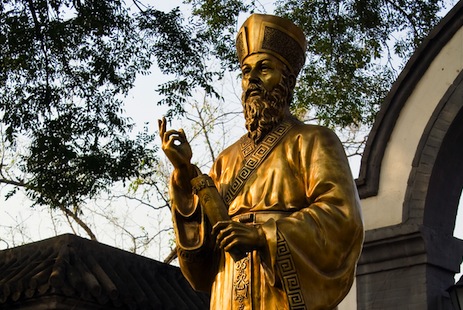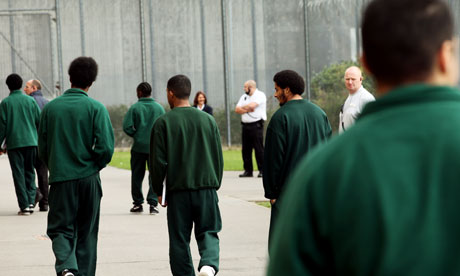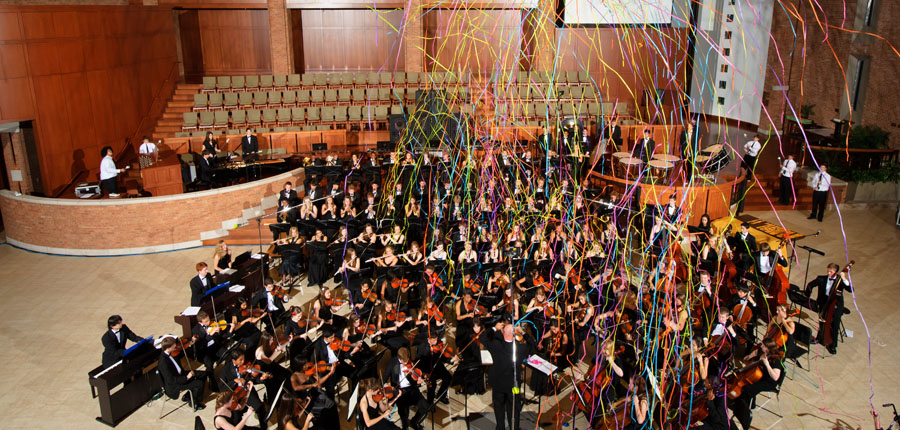Wisdom Story 57

by Paul Brian Campbell,SJ
Once upon a time a man couldn’t find his ax. He suspected his neighbor’s son because the boy walked like a thief, looked like a thief, and spoke like a thief.
The following morning the man found his ax when he remembered where he left it. The next time he saw his neighbor’s son, the boy walked, looked, and spoke like any other child.
Ricci beatification process heads to Vatican

Bronze statue of Fr Matteo Ricci
The beatification process for a 16th century Jesuit who played a key role in introducing Christianity to China is headed for the Vatican.
Bishop Claudio Giuliodori, apostolic administrator of Macerata diocese in Italy, formally closed the diocesan phase of the sainthood process for Father Matteo Ricci on May 10.
Ricci was born in Macerata, central Italy, in 1552 and died on May 11, 1610 in what was then Peking.
While in China, Ricci became the first Westerner to be invited into the Forbidden City, acted as a court advisor on Europe and its cultures, and obtained the emperor’s protection and support.
The initial process began in 1984 with the Jesuit being declared a “servant of God” but further progress stalled soon after.
The process was reopened by Giuliodori in 2010, during celebrations marking the 400th anniversary of the Jesuit’s death.
Now, Riccis’s cause will move to the Vatican, where it will be taken up by the Congregation for the Causes of Saints.
“We have a debt, the Church has a debt, humanity has debt to Father Matteo Ricci,” Bishop Giuliodori said during the closing ceremony of the local phase of the beatification process.
Giuliodori stressed that, in his approach to China’s culture, Ricci didn’t try to affirm “any kind of superiority of European civilization” but acted only to spread his faith.
The bishop said he spoke of Ricci’s beatification process during a recent audience with Pope Francis.
The Jesuit pope, who wanted to be a missionary to Japan in his youth, said that Ricci plays a “fundamental role” because he “opened up a new way of evangelizing,” based on the inculturation of the faith, according to Giuliodori.
“He did it thinking out of the box,” the pope reportedly said.
Archbishop Savio Hon Tai Fai, the Vatican’s highest ranking Chinese cleric at the Vatican, who also took part in the closing ceremony, praised Ricci for being an “exceptional pioneer for intercultural exchange, an exemplary missionary for evangelization.”
According to Gianni Criveller, a Hong Kong-based missionary who headed the historical commission that served the beatification process, Ricci is a modern figure for his capacity to communicate globally, as proved by his numerous letters.
Theme Retreat: God’s Unconditional Love, Self-Acceptance and Reaching Out to Others
| Location: | Xavier House, Hong Kong | |
| Organizer: | Ignatian Spirituality Centre, Hong Kong | |
| Introduction: |
At the heart of the gospels is the command to “Love the Lord your God with all your heart and with all your soul and with all your strength and with all your mind” and “Love your neighbour as yourself” (Luke 10: 27, Matthew 22: 37). An authentic experience of God’s unconditional love enables one to better accept oneself and reach out to others in service. (Conducted in English) Fr Norris Seenivasan, S.J. was the Director of St. John Vianney Retreat House. He is currently the Head of the Counselling Ministry and Diocesan Catechetical Commission in the Diocese of Melaka-Johor in Malaysia. He has taught philosophy at the Ateneo de Manila University and spirituality courses at Loyola School of Theology in Manila. He has a PhD in Clinical Psychology. He is now superior of the Jesuit community in Masai, Johor, Malaysia. Leader:Fr Norris Seenivasan, S.J. Services Fee:HK$2400 Download our Calendar of Events for 2013
Address:27 Peak Road West, Cheung Chau Island, Hong Kong Phone:(852) 2981-0342 Fax:(852) 2981-0749 eMail:xhisc@ignatian.net Website:http://xavier.ignatian.net Telephone Enquiry Time:9:15am – 12:15pm, 2:00 pm – 5:00 pm Transport:
|
|
| Date: | 2013-06-24 ~ 2013-06-30 |
Podcast : Young and Imprisoned

Michael Kennedy, S.J., talks about the Jesuit Restorative Justice Initiative and his work with youth in the California prison system. Father Kennedy is the author of Eyes on Jesus and Eyes on the Cross, among other books. He spoke to Associate Editor Luke Hansen, S.J., at the Los Angeles Religious Education Congress. After the interview, several juvenile inmates who Father Kennedy works with in Los Angeles wrote powerful letters to Pope Francis, thanking him for washing the feet of juvenile prisoners in Rome on Holy Thursday.
|
|
| Download MP3 |
Re-Situate Your Life

by Becky Eldredge
Through praying with the various Scriptures suggested for the First Week of the Spiritual Exercises, we come to understand that even though we are sinful people God still loves us and offers us forgiveness. We are invited to view sin as God sees sin. The lens we look through, though, is one of love, which is why we spend time before the First Week of the Exercises praying with the First Principle and Foundation and Scriptures that accompany it.
The First Week of my 19th annotation retreat was challenging at times, because my eyes were significantly opened to see my own sinfulness. The words, “Re-situate your life” were a repeated phrase that gently crossed my thoughts. These were words, spoken in love by God, that held the profound challenge to re-situate my life around Christ and not around the things in my life that appeared to be good: my hubby and kids, my ministry, my commitments.
When I reflect back on my First Week experience during the Exercises, I see a firm but gentle peeling back of the many layers that were keeping me from fully following Christ and from fully centering my life in Christ. The preparation time before I took a healthy look at what kept me from putting God first in my life was foundational for me. The preparation time before the First Week built an intimacy and trust in Jesus, and it strengthened my understanding of the depth of love he had for me. It was only after reminding me of his love that Jesus walked with me on the road to fully re-situating my life around him. It’s a journey that continues to bear fruit in ways beyond my imagination!
St. Andrew Bobola

Jesuit missionary and martyr. He was born a member of a noble Polish family in 1590. Entering the Society of Jesus at Vilna in 1622, he preached in the church of St. Casimir there.
He took solemn vows in 1630 and was made superior of the Jesuits in Brobuisk. There he preached and distinguished himself by his work of mercy during a plague.
In 1636, Andrew was sent to the Lithuanian missions. A house was provided for him in Pinsk, Belarus, by Prince Radziwell, and he worked there despite attacks by Protestants and schismatics.
On May 10, 1657, Andrew was kidnapped by two Cossacks who beat him and tied him to the saddles of their horses so they could drag him to a place of torture. He was partially flayed alive and finally decapitated. His remains were buried in Pinsk and then moved to Polosk.
Real Presence

by Lisa Kelly
Mid-lecture the teacher inconspicuously taps on the front corner of my daughter’s desk to call her back to attention. Much like me, my daughter is a dreamer, comfortable letting her mind wonder into other worlds or places she would like to be. Often it seems my prayer time is just that: time to wonder away to another place.
During Sunday mass I wonder how many people in the congregation are actually following the homily at all. I imagine their minds tuning out the words from the pulpit, coming to rest instead upon their to do list or some recent conversation or upcoming tension to be dealt with. As I wonder about them, I realize that I am just as checked out as they are, lost in my head.
At its very heart, though, Ignatian spirituality is about the exact opposite of letting your mind wonder carelessly in prayer. It is about being fully present to the moment, every moment, including those during prayer and those throughout the day. The depth of Ignatian prayer comes not from saying any particular words or incantation, but from being fully in a moment of relationship with Christ.
In the Examen, I sit one-on-one with Christ. There is no mediator. There is nothing to hide behind. It is just eye-to-eye conversation. This experience of being fully present to Christ, or rather Him being fully present to me, stops my mind in its tracks. There is no where else to be or wonder in to. Here in this moment, with Christ, is the only place I need or want to be. It is where I am most honest about what is going on in my life, where I hear revelation unfettered by the clatter of the day. Only in this full presence is there peace.
And then, like the teacher tapping on the desk, I am brought back from my presence with Christ to my daily reality. Being fully present in the moment means constantly recognizing beauty around me, need in front of me, and capacity within me. In each moment I am aware of my interior movements, my feelings and motivations and what invitations God has placed before me. Aware in the world, I notice the warmth of the sun, and the breeze. In conversations I focus fully on the person before me, look them in the eye, observe their affect, really listen to what they are saying, and respond with sincerity. Only then is there true connection. If I am not present to the moment, I miss that. I miss opportunities to see or respond to God.
CS Lewis wrote that evil seeks to keep us out of the present moment, wasting it with regret of past or worry about the future, because only when one is fully present in the moment can God be engaged. Right here and right now, to what are you present? Therein lies your treasure.
Photo: “paying attention” by Leonard John Matthews from Flickr (Used under Creative Commons license)
Performing Arts and Ignatian Spirituality

See and hear Dr. Tom Merrill and Mr. Stephen Skiles discuss the relation between performing arts and the Jesuit mission.
Wisdom Story 56
by Paul Brian Campbell, S.J.

The old Zen master lived in utter simplicity in his mountain monastery with a few disciples. One night, a young monk feels a new sensation in his meditation. Something warm, pulsating, loving… and… furry? He looked down onto a cat. The tail flicked against his face again. The cat turned and rubbed his head on his knee, purring loudly. Gently pushing it away, the monk settled back into his meditation. Unruffled, the cat wound himself around the next disciple, to be again pushed away.
No matter how many doors and windows they closed, the cat always found its way into the meditation room. After a month of this feline audacity, the disciples had enough. They put a nice embroidered collar on him and attached it with a long lead to a pillar in the temple. They gave him a silk pillow, and every day they would feed him, stroke him, and play with him. The cat was very content with his new arrangement.
A few years later, the old Master died. A young abbot from a different area was installed, and life resumed its peaceful rhythm. The new abbot did notice that a black cat was always tied to the northern pillar of the great temple, surrounded by choice offerings and sitting on an ornate silk pillow. Not wanting to look ignorant, he did not ask anyone about its presence, and assumed that it was a tradition of the monastery.
When the cat died, the abbot ordered another black cat to be found to take its place, and installed with full honor.
Over time, all the disciples who had known why the first cat was tied to the pillar died. The successive generations of monks gradually forgot the utilitarian purpose of tying the cat to the pillar. Yet the tradition lived on and flourished for centuries. The original collar was reverently worshipped as a relic. Books of theological commentaries were written on the spiritual significance of tying a black cat to the northern pillar. Legends of miraculous healings due to the intercession of the holy cat were compiled and studied devotedly. Trinkets and memorabilia were being mass produced. Business had never been better.
Best Ignatian Songs: Mary

by Jim Manney
The singer-songwriter Patty Griffin sang a Best Ignatian Song a couple of years ago. Here’s another wonderful Griffin tune, sent along by my friend and colleague Maria Mondragon.
Jesus said Mother I couldn’t stay another day longer
Flys right by me and leaves a kiss upon her face
While the angels are singin’ his praises in a blaze of glory
Mary stays behind and starts cleaning up the place









